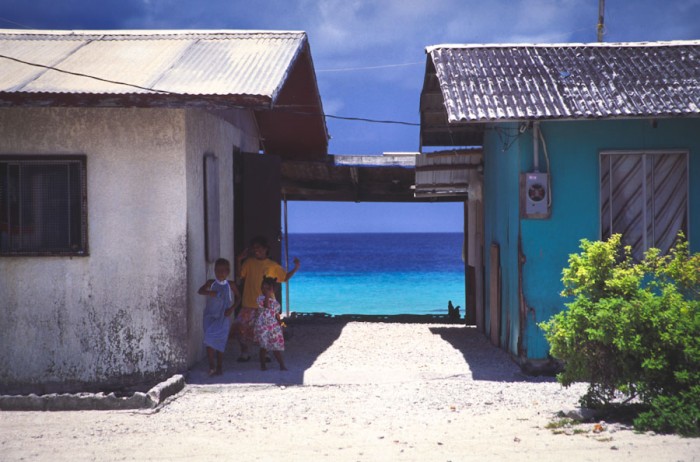
Hispanic immigrants are the face of contemporary immigration in the United States. But the greater Seattle area, sometimes referred to as “hyper-diverse,” is home to communities of people from a wide range of countries — including some you may not have heard of.
“My kids need to know where they come from,” says Jiji Jally of Lacey. Originally from the Marshall Islands, an island country about half-way between Hawaii and Australia, Jally works as an Marshallese language interpreter and serves as an advocate in her free time.
“I try to speak from the heart when I talk about my community,” she says, referencing the small but growing population of Marshall Islanders who live in the greater Seattle area.
Most Marshallese families in Washington live in Auburn (where there’s even an apartment complex known as “Marshall Town”), as well as in Federal Way, Kent and Everett (there’s also a significant community in Spokane).
And they’re a group that needs advocates — caught between a troubled history and the strange immigration no-man’s land they live in as a result.
The U.S. invaded the islands during World War II (it was under Japanese occupation at the time) and went on to use the islands for nuclear testing in the 1940s and 1950s. These tests resulted in contamination and evacuations of parts of the islands. Decades of attempts to secure compensation for Marshallese communities have followed.

In 1986 the Marshall Islands entered into a “Compact of Free Association” with the United States. This agreement means, among other things, that Marshall Islanders are able to travel, live, work and attend school in the U.S. indefinitely and without visas.
A number of Marshallese have responded, fleeing few education and employment opportunities back home, and as of the 2010 census, over 22,000 Marshallese are now living in the United States (a three-fold increase since 2000).
But this special immigration status, which is shared with other tiny island countries Micronesia and Palau, also means exclusion from certain government benefits — including food assistance.
“Benefits wise, we’re being cut off and not understood by benefit services,” says Jally “And it’s all because we’re not citizens.”
That wasn’t always the case, says Linda Stone, Food Policy Director at the Children’s Alliance, an organization that works on food security and other issues that impact children in our region. Stone says that Welfare Reform in 1996 cut many immigrants off from government benefits. And while much of that assistance was restored to immigrant groups (like refugees and asylees) a few (including those under Compacts of Free Association) remain excluded.
“Putting food on the table it gets hard… you think ‘ok, we’ll do what we have to do to stretch’ but sometimes I worry they’re not getting what they need,” says Jally who currently cares for seven children (five of them nieces and nephews sent here for school by relatives back in “the Marshalls”), “I worry that they’re… deprived.”
In 1997 Washington state responded by establishing a state funded program called the State Food Assistance Program to provide food stamps to these excluded groups. The Food Assistance Program — which currently serves 15,000 people in Washington state — was saved from proposed elimination in 2010, but the last four years have reduced benefits to 75% of the federal Supplemental Nutrition Assistance Program (also known as SNAP).
“Providing a different level of assistance to one group because they have a different immigration status isn’t fair and isn’t right,” says Stone who’s organization is promoting a campaign to have full food assistance benefits restored to these groups this year, “And it’s not what we do in Washington state.”
And while a 25% cut may seem like a compromise in the face of possible elimination, the impact is being deeply felt according to Emijah Smith who works with the Marshallese community through Children’s Alliance, “It really comes down to do I pay my electrical bill or do I buy food? Do I buy my child’s school supplies or food? Do I go to…the doctor or food? Rent or food?”
Jally says those choices are all too familiar in her own life.
“I think it’s every kid’s right to not be hungry, not to have to think about food.”
No matter their status.

